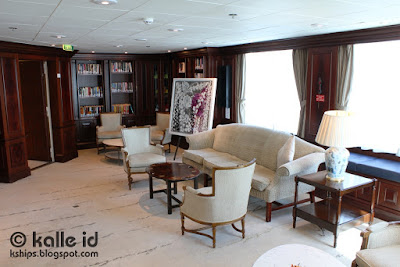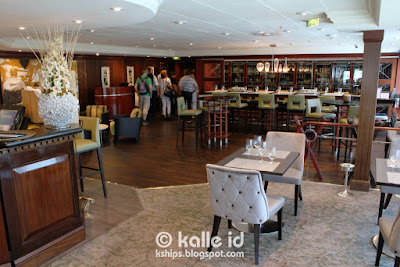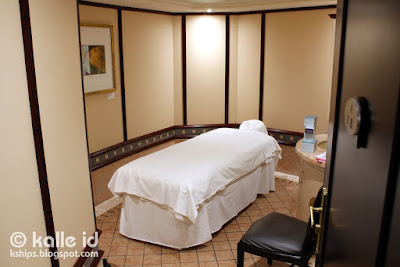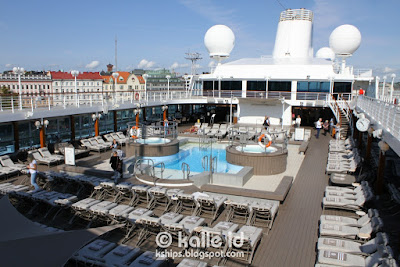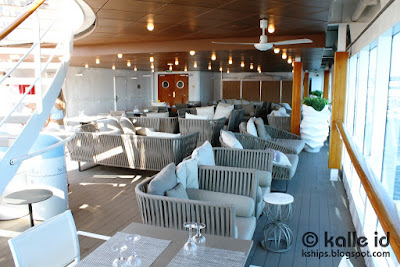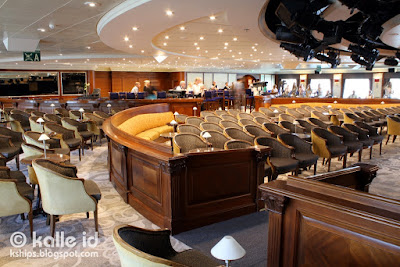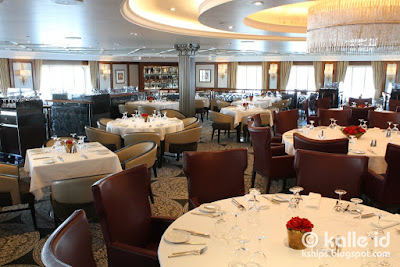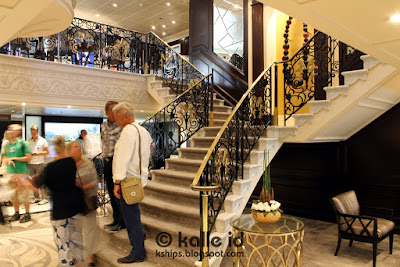Today, I unexpectedly had some free time to go out for ship photographing purposes, and as my object I chose the
Marella Discovery, which I have never encountered but which was in Helsinki today. But, much to my surprise, by the time I reached Vattuniemi in Lauttasaari, dark clouds had gathered and there was even a spot of rain. As this summer has been the warmest and sunniest in recorded history, this was unexpected to say at least. Thanks to the clouds, the photos of the
Marella Discovery turned out far less well than expected. But then something magical happened: the rain front with the dark clouds passed around me, and by the time the
Princess Anastasia departed, the views were extremely dramatic, as you can see below.
Princess Anastasia
IMO 8414582
Name history:
Olympia, Pride of Bilbao, Bilbao, SPL Princess Anastasia, Princess Anastasia
Built 1986, Wärtsilä Turku New Shipyard, Finland
Tonnage 37 583 GT
Length 176,82 m
Width 28,40 m
Draught 6,71 m
Ice class 1A Super
2 500 passengers
2 447 berths
580 cars
1 115 lane metres
4 Wärtsilä diesels, combined 22 988 kW
2 propellers
2 bow thrusters
Speed 22 knots
Since it's been a while since the history of the
Princess Anastasia was covered here, and there have been further developments, I guess this is as good a time as any to look at it again.
The
Princess Anastasia was originally built as the
Olympia
for Rederi AB Slite for use on Viking Line's Helsinki-Stockholm
service. Somewhat unusually Rederi AB Slite had purchased the plans of
their fellow Viking Line member SF Line's Helsinki-Stockholm newbuilding
Mariella instead of opting for a design of their own. The
Olympia was delivered in April 1986 and replaced Rederi Ab Sally's
Viking Saga on the Helsinki-Stockholm route (the
Viking Saga survives today in drastically rebuilt form as Celestyal Cruises'
Celestyal Crystal). The
Mariella and
Olympia served together on the capital cities service for seven years.
The plan for Slite was for the
Olympia to be replaced by the new
Europa in 1993, and the
Olympia was chartered to P&O Ferries in preparation for this (a charter to Euroway, a company funded by the same bank as Slite was also considered, but never happened). However, just days later Rederi AB Slite was declared bankrupt (see
this entry on Silja Europa for details on the bankruptcy). In May 1993, the ship was renamed
Pride of Bilbao
and placed on P&O Ferries' Portsmouth-Bilbao and
Portmouth-Cherbourg services. Later during the year the ship was sold to
Irish Ferries, who continued chartering her to P&O.
Pride of Bilbao remained on the Portsmouth-Bilbao -route until
2010, when P&O Ferries closed the service down. In September 2010
she was laid up at Falmouth and subsequently her name was shortened to
Bilbao.
In December of the same year she was then taken over by St. Peter Line
on a sale/charter agreement. Between January
and March 2011 the ship was rebuilt at Klaipeda and renamed
SPL Princess Anastasia. Entering service with St. Peter Line in March 2011, the
SPL Princess Anastasia was initially used on St. Petersburg-Stockholm and St.
Petersburg-Stockholm-Tallinn-St. Petersburg -routes, but these were later altered to four-night St. Petersburg-Helsinki-Stockholm-Tallinn-St. Petersburg cruises.
St. Peter Line's services were not a tremendous long-run success, and in 2016 St. Peter Line begun a cooperation with Moby Lines. Moby took over both of the company's ships, with the
Princess Maria tranferred to Moby's own route network, while the
SPL Princess Anastasia stayed on the Baltic, but now under the Italian flag and her name changed to
Princess Anastasia, without the unseemly prefix. Painted with a new, unusual combined Moby/SPL livery during a lengthy refit, the
Princess Anastasia re-entered service in spring 2017, now sailing for Moby SPL, a joint venture between Moby and SPL, with both owning 50% of the company. The ship now has a somewhat complex weekly itinerary, combining the four-night cruises it did before with the two-night Helsinki-St. Petersburg cruises previously operated by the
Princess Maria.
The photographs below show the
Princess Anastasia departing Helsinki Länsisatama (West Harbour) on the evening of 5 August 2018. Photographed from Sisä-Hattu. As per the usual, click on the images to see them in larger size.
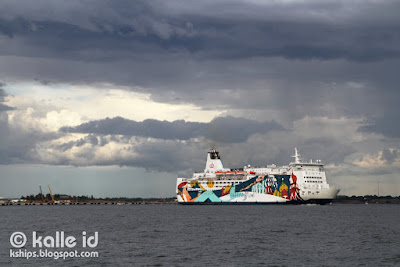 |
| Big cloud, small ship. |
 |
| A more close-up view, showing the livery with a Russian landscape of sorts. The other side has Moby markings and an Italian landscape in similar style. |
 |
| Passing Pihlajasaari has never looked so dramatic. |
 |
| The should repaint the back of the funnel. Maybe black, so they wouldn't need to repaint it again. |
 |
| Although it doesn't look it from the photo, the weather was more than warm enough for SUP-boarding. |
Next time: Unless I have a chance to go out for newer photos, the
Star, photographed some minutes after the
Princess Anastasia.


